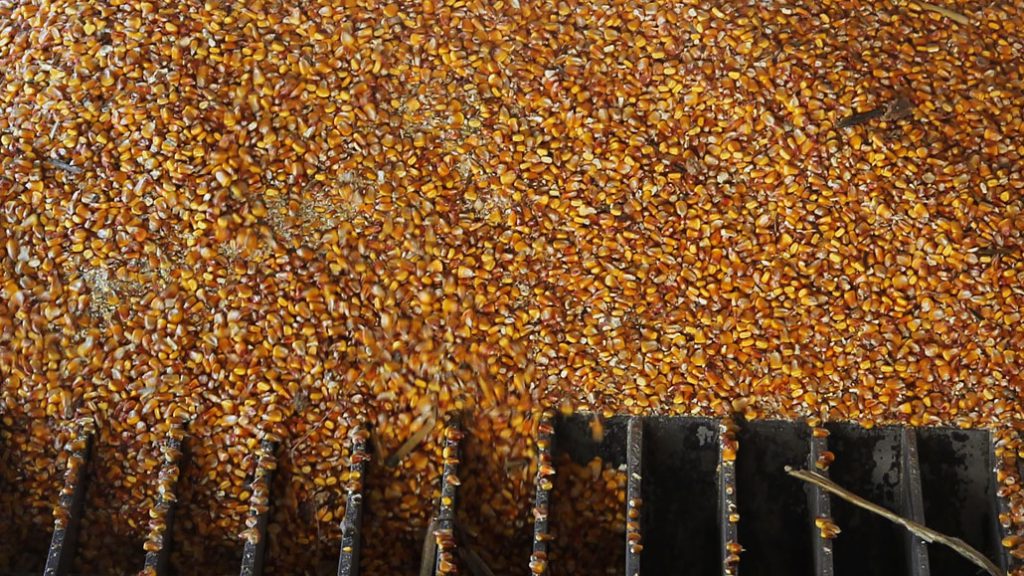The value of corn
UNDERSTANDING MARKET INFLUENCES

CORN CAN BE a great crop to grow. In Ontario, our corn yields have been consistently increasing on an annual basis. According to Statistics Canada, in 2018 Canadian farmers planted approximately 3.6 million acres, which is an increase of 1.6% from 2017. Ontario acreage has been stable over the last two years with 2018 acreage coming in at 2.2 million acres. That is an increase from 2017 of approximately 1.7%. Quebec farmers planted 953,000 acres and Manitoba farmers planted 428,000 acres.
When considering Ontario’s corn crop, it’s often easy to think of it in a homogeneous geographic area. However, that isn’t even close to being true. At one time, grain corn was only grown in the deep southwest of the province, but over the years it has spread to the Quebec border and into northern Ontario. This is a very wide geographic area and leads to some very different market conditions across the province. Corn demand is different in southwestern Ontario versus central Ontario versus the far east of Ontario. Not only does the corn crop vary in growth across the province, but the price of corn can vary as well. There is much to consider when considering the price of corn in Ontario.
PRICING
The cash price for corn in Ontario is determined by the nearby futures month plus or minus a basis value, which is a reflection of local supply and demand and foreign exchange. Futures values trade in U.S. dollars. For example, on November 9, 2018 the local cash price in Chatham was $4.45/bushel, based on a futures price of $3.69 and a basis of + 76 cents. At the same time, the same bushel of corn if sold in Winchester was worth $5 based on the same futures price, but a considerable higher basis value of + $1.30. Typically, as you move east in Ontario, basis values usually go up. A lower Canadian dollar tends to increase cash basis and vice versa.
The difference in basis values reflects the diverse demand base between the different parts of the province. There are ethanol plants in Chatham, Sarnia, Alymer, Tiverton, Kawartha, and Johnstown, which process a third of Ontario corn into ethanol. Eastern Ontario has more of a livestock base and is closer to Quebec markets and salt-water ports. It also has a lower supply of corn than southwestern Ontario.
With the signing of the Comprehensive Economic and Trade Agreement (CETA) last year, Canadian corn was made tariff free into the European Union. This led to a robust export market for Ontario corn especially at a time when American corn going into the EU was subject to tariffs. Along with domestic feed and food use, Ontario demand for corn continues to be dynamic. Geographic location in the province has a significant impact on your local basis values.
Ontario basis is one factor, but of course the futures prices of grain are determined at the Chicago Mercantile Exchange in Chicago. These prices are affected by the supply and demand of grain on a global scale. With the U.S. being the largest producer of corn in the world, what happens there directly impacts the futures price and the cash corn price in Ontario.
U.S. CROP
For the 2018 U.S. crop, the United States Department of Agriculture (USDA) projected national corn production to come in at 14.626 billion bushels with an average yield of 178.9 bushels/acre. This yield remains on track for the highest on record with harvested acreage pegged at 81.8 million acres. This huge crop has kept futures prices at bay, with March corn futures in mid-November 2018 at $3.81 a bushel. This is approximately 30 cents higher than 2016 and 2017, but 70 cents lower than 2013 and 2014.
Despite the big crop in the U.S., the good news is demand for corn is strong. For instance, this year the projected corn demand in the U.S. is 15,080,000 bushels. Corn ending stocks have decreased from 2.140 billion bushels in 2017 to 1.736 billion bushels in 2018. Only consistent increased corn productivity keeps ahead of this demand. Ontario corn productivity does the same here.
In 2018, high DON values in Ontario corn did create some major challenges for both farmers and end users (the ultimate results of this were not fully apparent at the time of publication). It will be another challenge for Ontario farmers as they look into 2019.
The world wants our Ontario corn. The key is managing the different market factors to ensure profitability.
Philip Shaw farms near Dresden, Ontario. He is the author of the Grain Farmers of Ontario Market Trends Report published 14 times per year. He speaks on grain prices across Canada and his commodity commentary can be read regularly in several publications. •
| WHAT YOU NEED TO KNOW • The cash price for corn in Ontario is determined by the nearby futures month plus or minus a basis value, which is a reflection of local supply and demand and foreign exchange. • With the signing of the Comprehensive Economic and Trade Agreement (CETA) last year, Canadian corn was made tariff free into the European Union. • The U.S. is the largest producer of corn in the world. • This year the projected corn demand in the U.S. is 15,080,000 bushels. |












